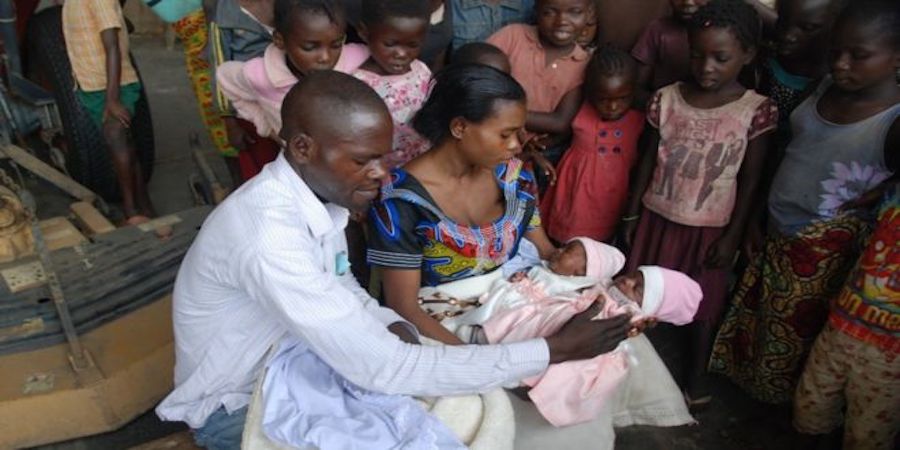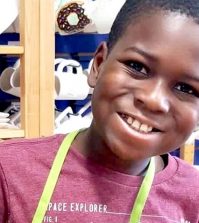- Study Says Most Parents Don’t Use Car Seats In Ride Share Vehicles Like Uber
- This 12-Year-Old Boy Is A Sophomore Aerospace Engineering Major!
- Fire Safety Experts Warn Of Hand Sanitizer Danger After A Mom and Kids Escape House Fire
- Recall Alert: Peaches May Be The Cause Of Salmonella Outbreak, 68 People Ill
- Summer Vacation In The Days Of COVID: Tips To Stay Safe
- How To Safely Grocery Shop During The Coronavirus Pandemic
- Michigan Teen With Vape-Related Illness Undergoes Double Lung Transplant
- Teen Kicks Off Anti-Vaping Campaign From Hospital Bed
- Teenager Receives Life Sentence For Strangling Sister To Death Over A Wi-Fi Password
- Toddler Falls To Death From 11th Deck of Cruise Ship
These Conjoined Twins Survived A Difficult Journey To Separation


Conjoined twins who were born in a remote village in the Democratic Republic of Congo, have survived a gruelling 15-hour journey on the back of a motorbike to be separated.
The twins were then flown to the capital, Kinshasa, where they were operated on by a team of volunteer surgeons.
In total, the 1-week-old twin girls had to endure an 870-mile (1,400km) round trip across jungle, on treacherous roads and by air.
The twins are now stable and being monitored.
Conjoined twins, Anick and Destin – will return to their village in three weeks time. They were born at 37 weeks in August, were joined at the navel, and they did not share any internal organs.
About 1 in every 200,000 live births results in conjoined twins. Their survival is never certain, especially when they are born in remote areas where no medical help is available.
However, to the astonishment of doctors, these twins were born naturally in the village of Muzombo, in the west of the African country.
Realising that the babies urgently needed surgery, their parents Claudine Mukhena and Zaiko Munzadi wrapped the babies in a blanket and set off on a long journey through jungle to their nearest hospital in Vanga.
Without any of the equipment or experience to carry out the complex separation surgery in the small hospital, doctors then transferred them to a hospital in Kinshasa more than 300 miles away. In order, to get there, the family was flown by MAF, a humanitarian airline which operates in remote regions, instead of them risking another long journey over dangerous roads.
Dr Junior Mudji, who is now taking care of them at Vanga Evangelical Hospital, said he was delighted.
“At 37 weeks, conjoined twins born naturally – it’s unheard of,” he said.
“They are doing fine, they sleep well and eat well. In general, they are doing well.
“We will keep them here for three more weeks to be sure everything is normal.”
Dr Mudji believes that the operation was, in fact, the first to separate conjoined twins in the Democratic Republic of Congo.
How A Mother’s Meticulousness Saved Her Child’s Life
A Mother, Akshata Rao, was looking at a photo of her son and noticed a “white glow” in one of his eyes and said that the photo helped save his life. She told new.com.au how her son Aayaan, who is six years old now, had discoloration in his right eye after having his picture taken with a flash when he was just over a year old. She immediately went to seek medical advice from a doctor in their hometown of Darwin but was assured that there was nothing wrong.
She immediately went to seek medical advice from a doctor in their hometown of Darwin, but was assured that there was nothing wrong.
“Then every time we took a picture with the camera’s flash we would see the white glow like a cat’s eye,” Ms Rao said.
She stated that it was only possible to see it in photos initially but that it started getting bigger with time. She kept insisting that doctors check it every time Aayaan went to get his vaccinations but the GP constantly kept disregarding it. The Mom exclaimed that doctors repeatedly told her that it was probably nothing and that it would go away on its own, one doctor even going to say, with unmeasurable confidence, that it was a beauty mark, but the mother could not settle down and still felt something was wrong.
When the family went over to India on holidays in 2013, answers started piling in when Aayaan was taken to an eye specialist who immediately said that something was wrong with Aayaan and referred them to the city where they had better equipment that had better detection capabilities.
Aayaan was diagnosed with retinoblastoma, a form of eye cancer that affects children under five years of age. It was established that the tumor grew on his retina which detached from his right eyeball and was situated dangerously on his optic nerve which connected to his brain. The decision on what to do next was fairly easy, says Rao.
Aayaan was operated on at a hospital in Bangalore, South India and got chemotherapy treatment before being released with a healthy bill. In a matter of 10 days they had his right eye completely removed and treated after seeing the specialist. The condition would have been life-threatening if it had remained undiagnosed.
Sandra Staffieri, an orthoptist and retinoblastoma care coordinator at Melbourne Royal Children’s Hisoital said that not many people are aware of retinoblastoma because it was a rare form of cancer. She also mentioned that if an eye has a white pupil in a picture, it is most likely the fact that the flash is reflecting off something inside the eye.
She also mentions that if you notice that a child has a turned eye or a white pupil in photos, that you have your child’s eyes examined by a doctor, an eye specialist (ophthalmologist) within 48 hours, as early detection can provide the best possible chance of survival and retaining full vision.
According to ophthalmologists, retinoblastoma is the most common form of eye cancer found in children and affects about 1 in 15,00 or 20,000 children worldwide and that early diagnosis offers the best chance of survival.
The survival rate of children affected with retinoblastoma is 98% in Australia and New Zealand according to RANZCO.













0 comments